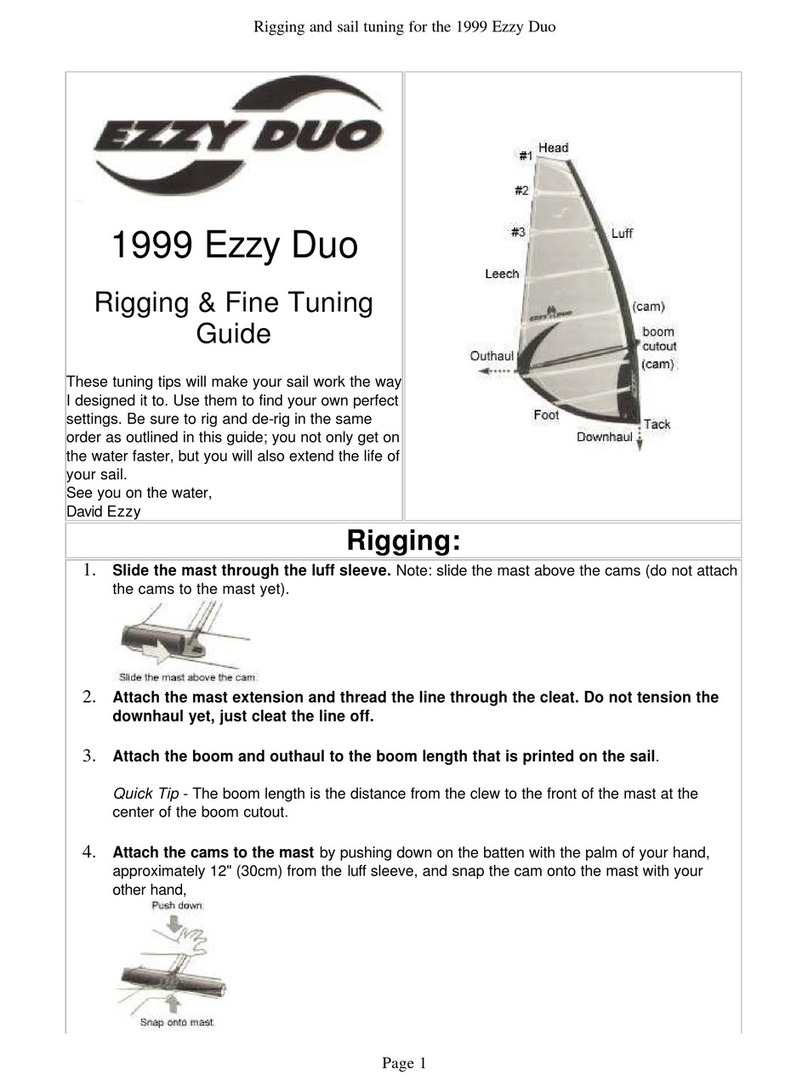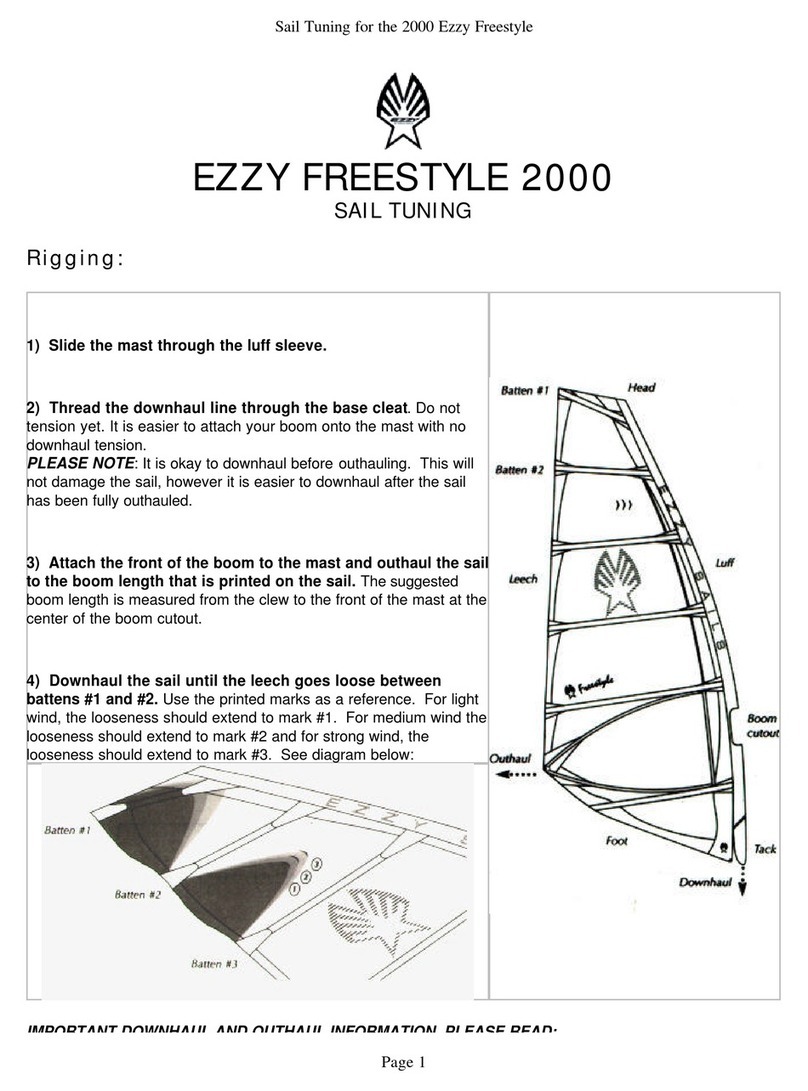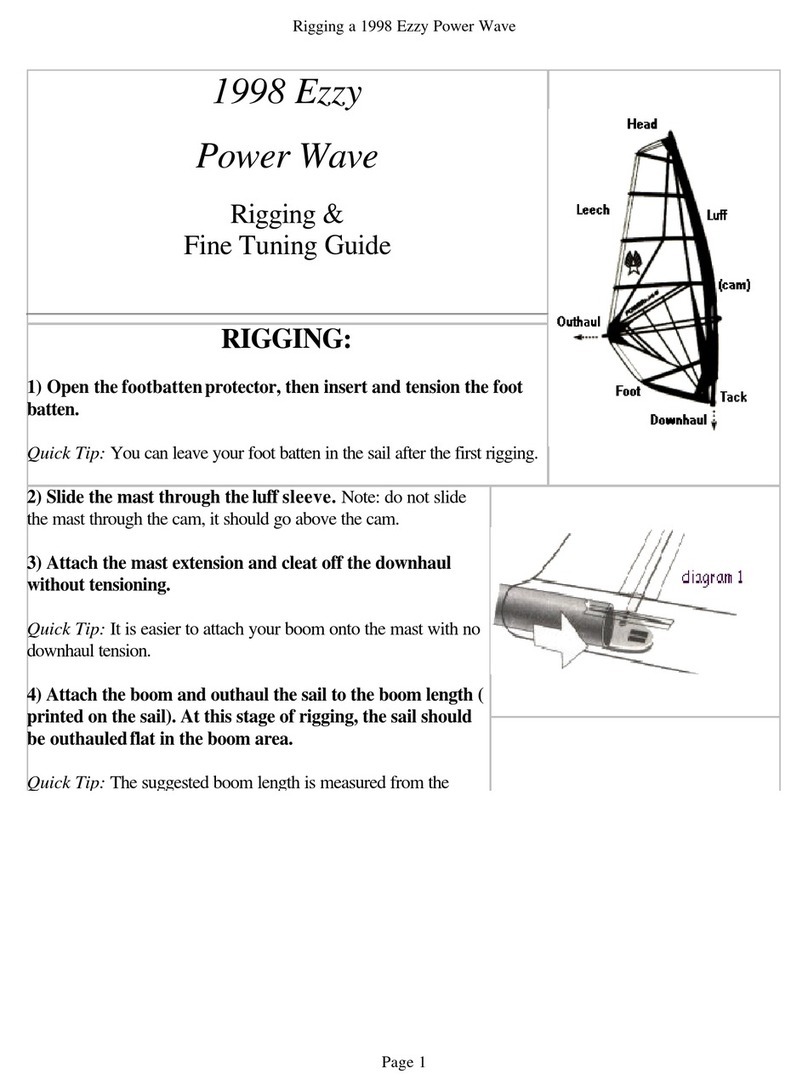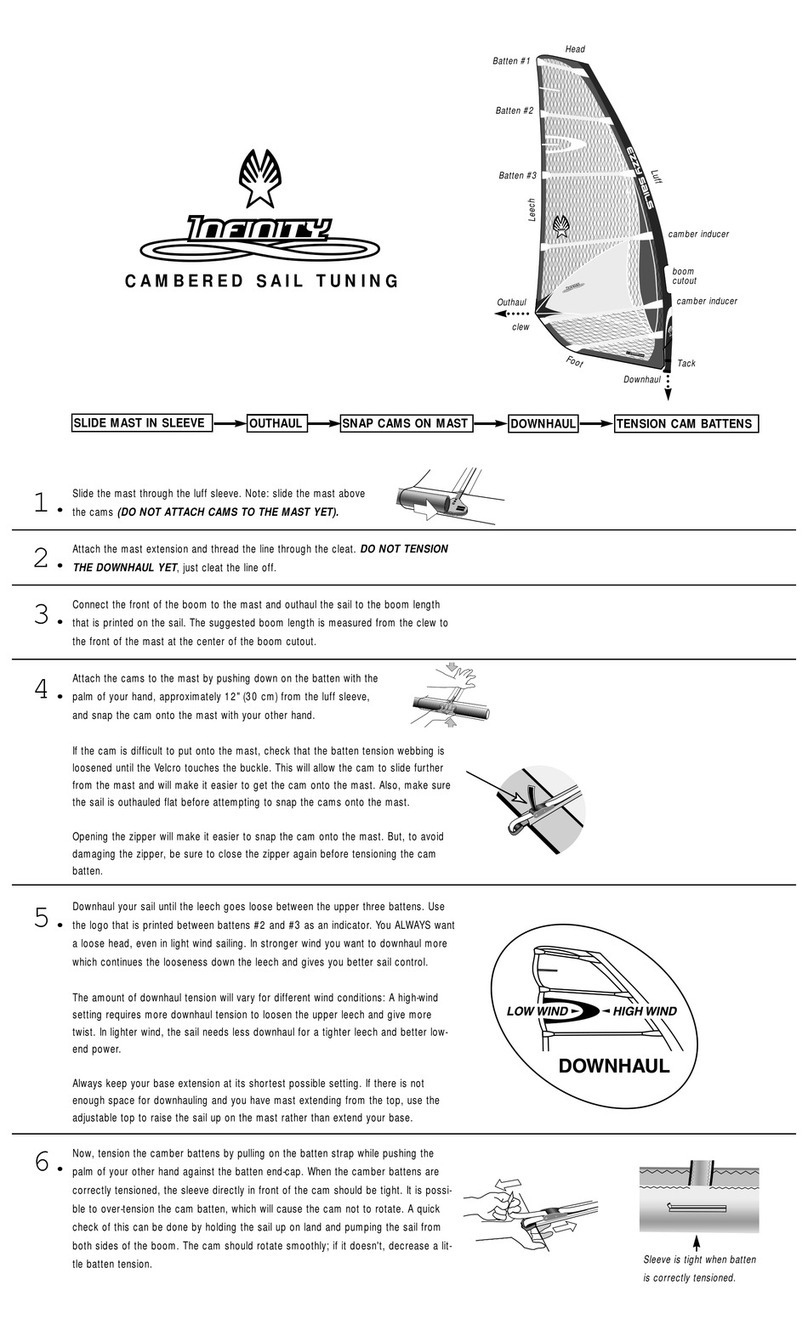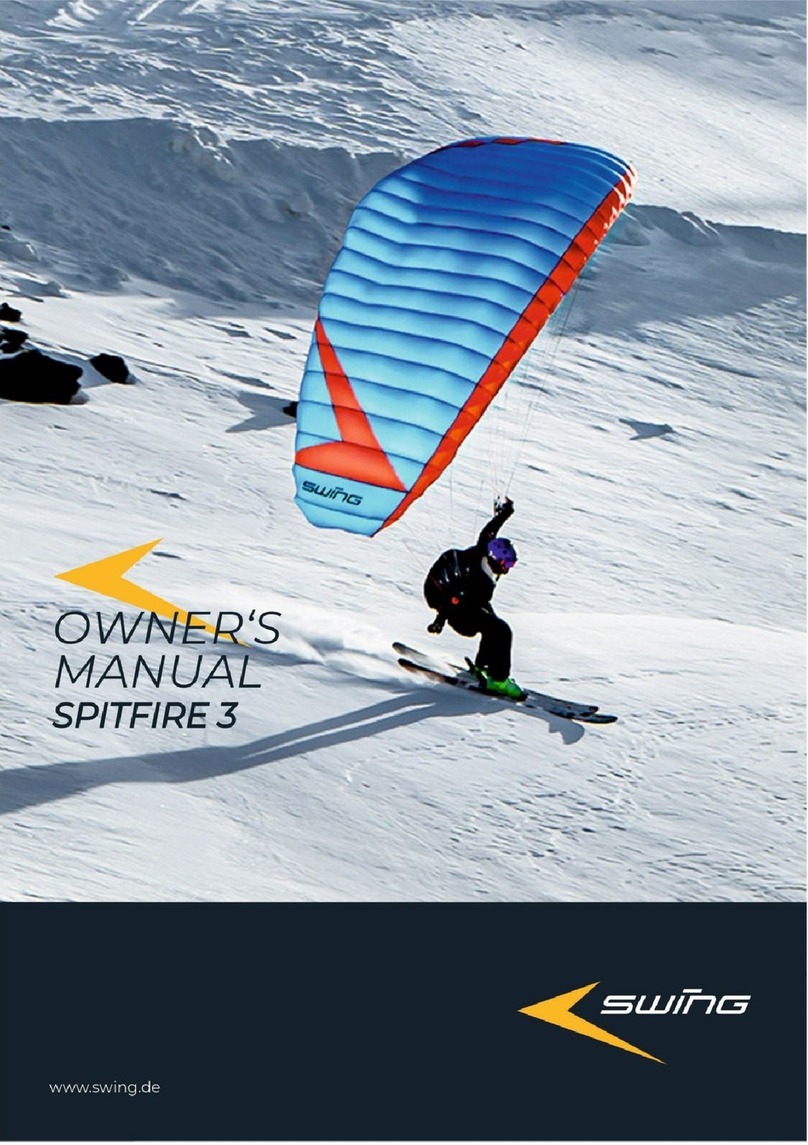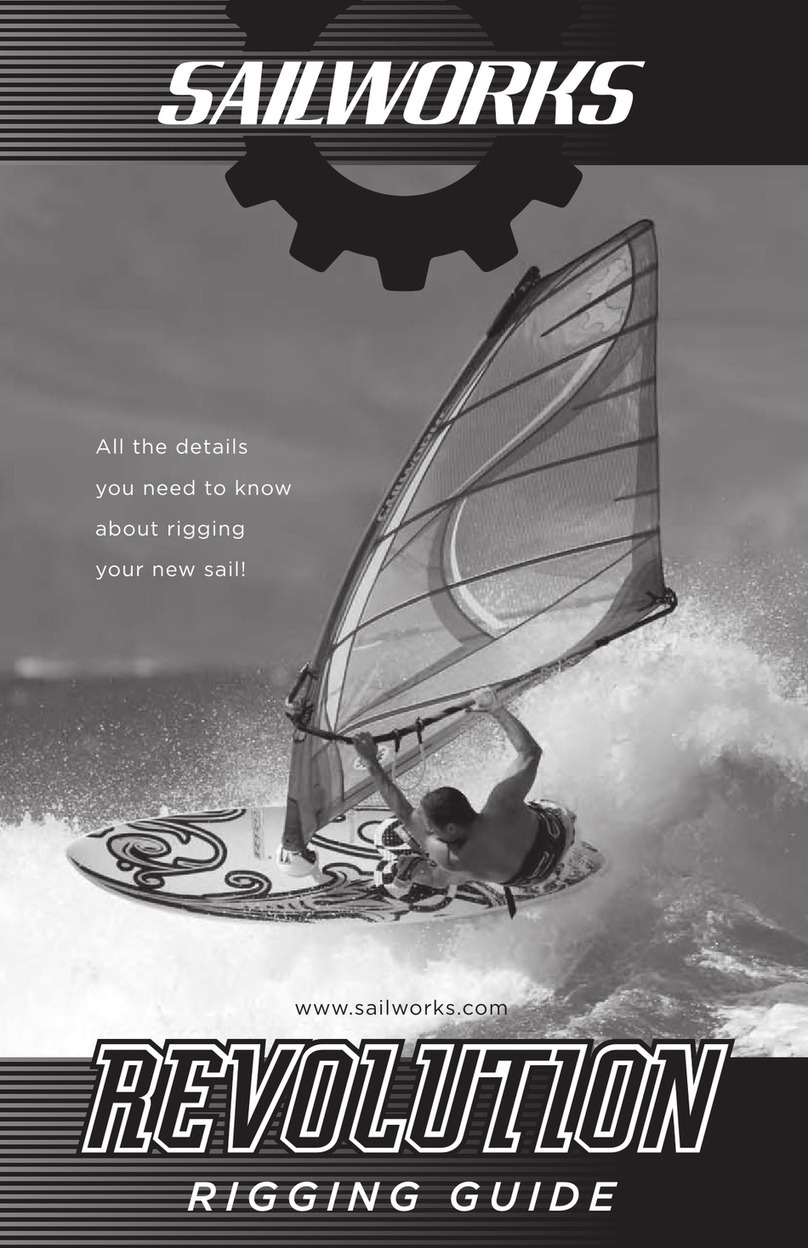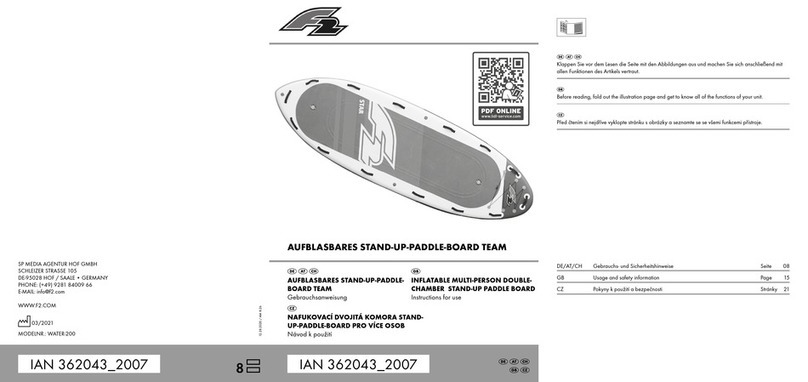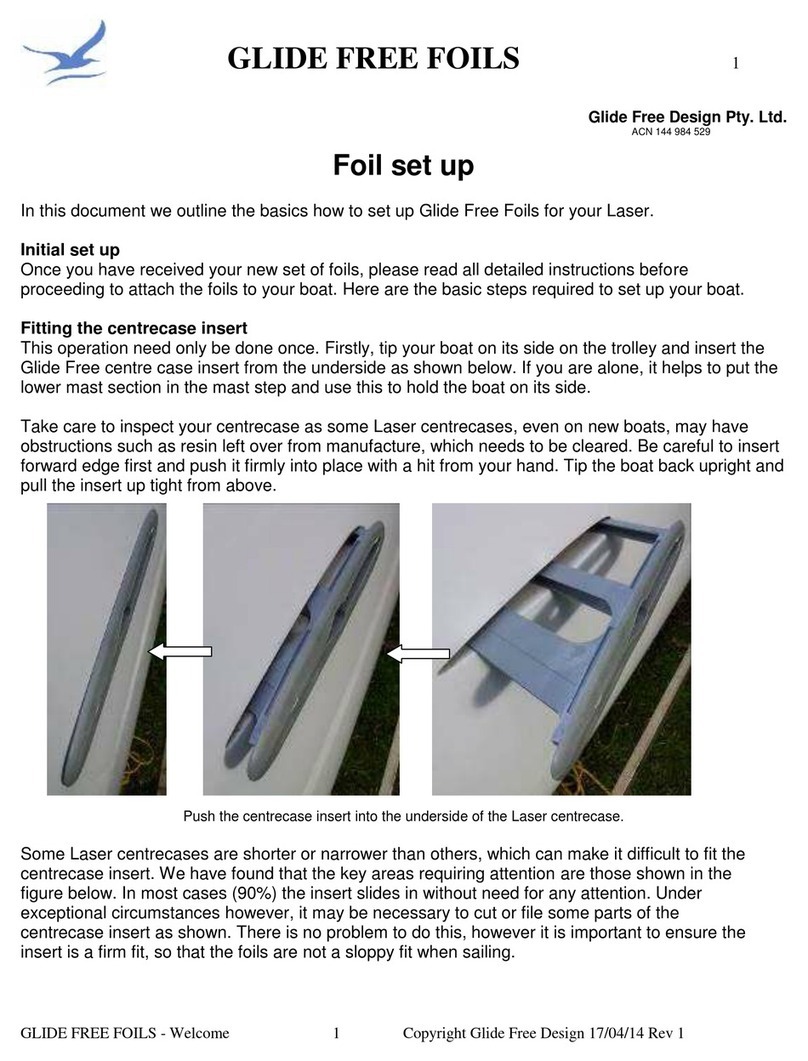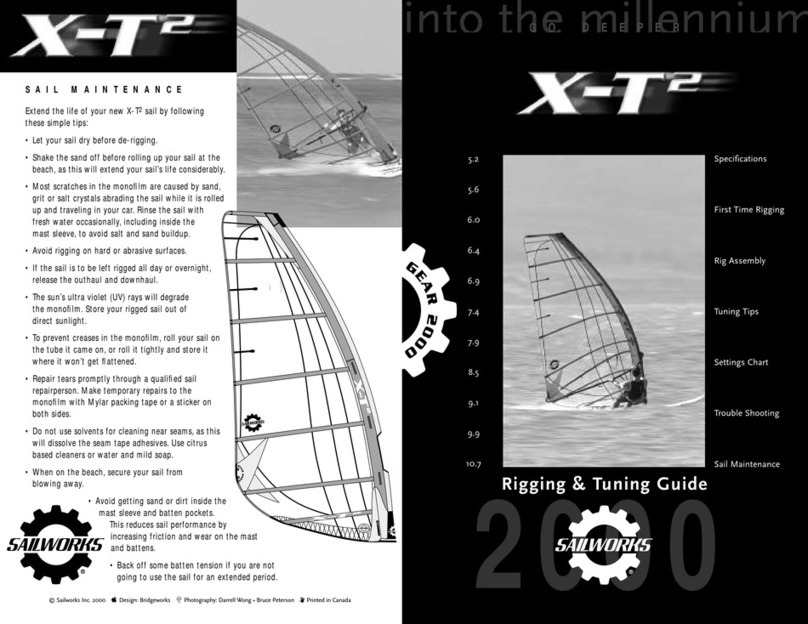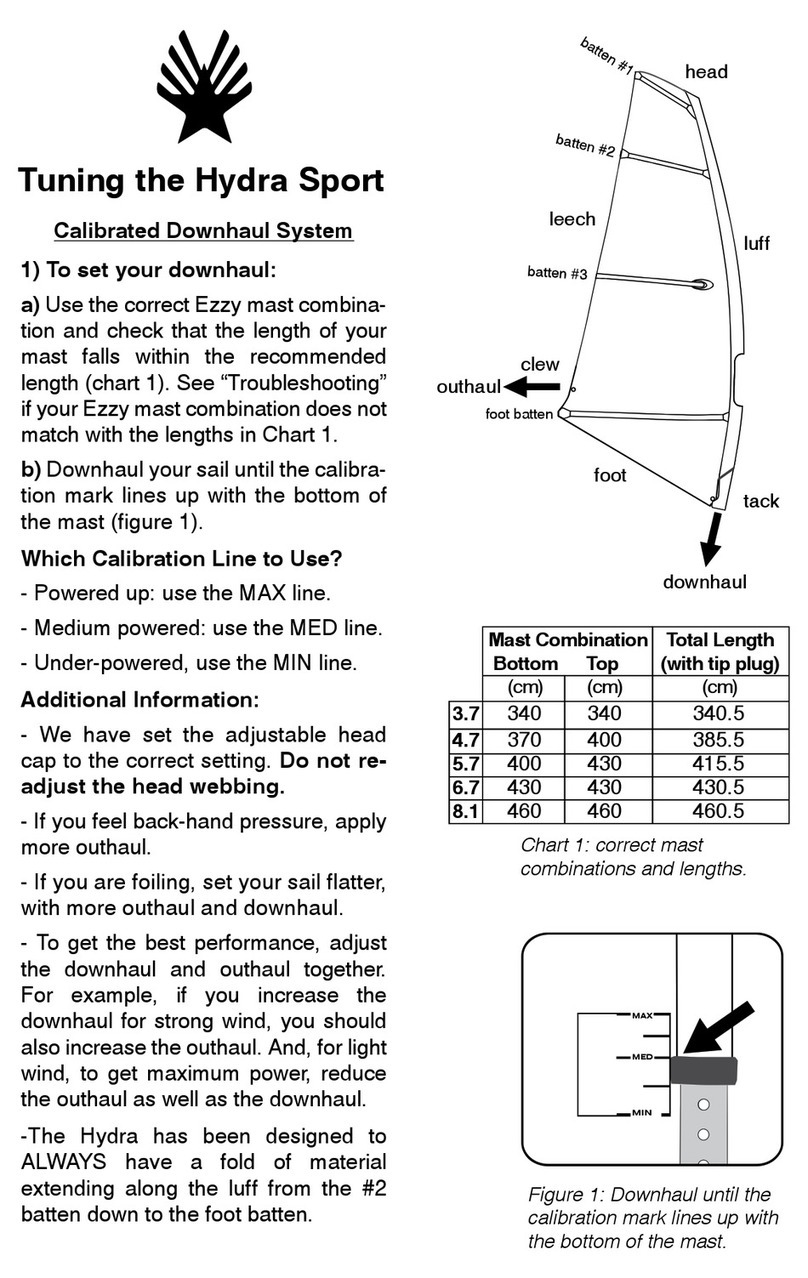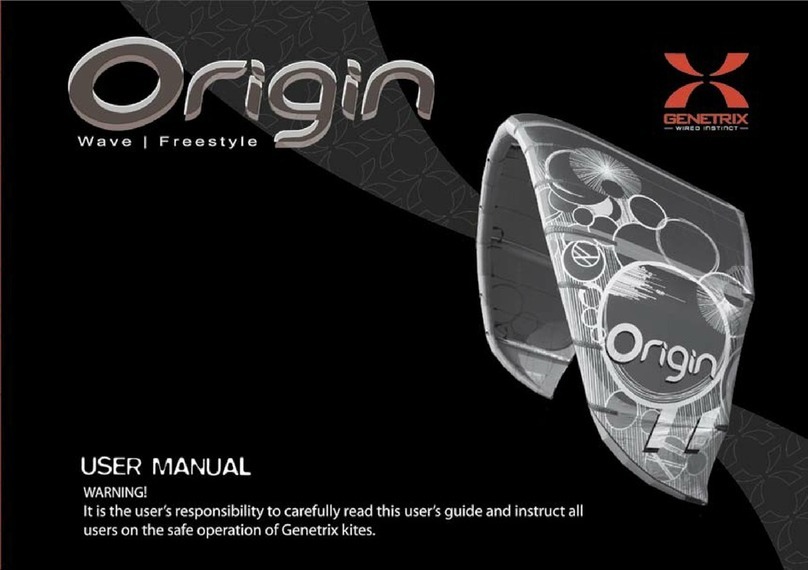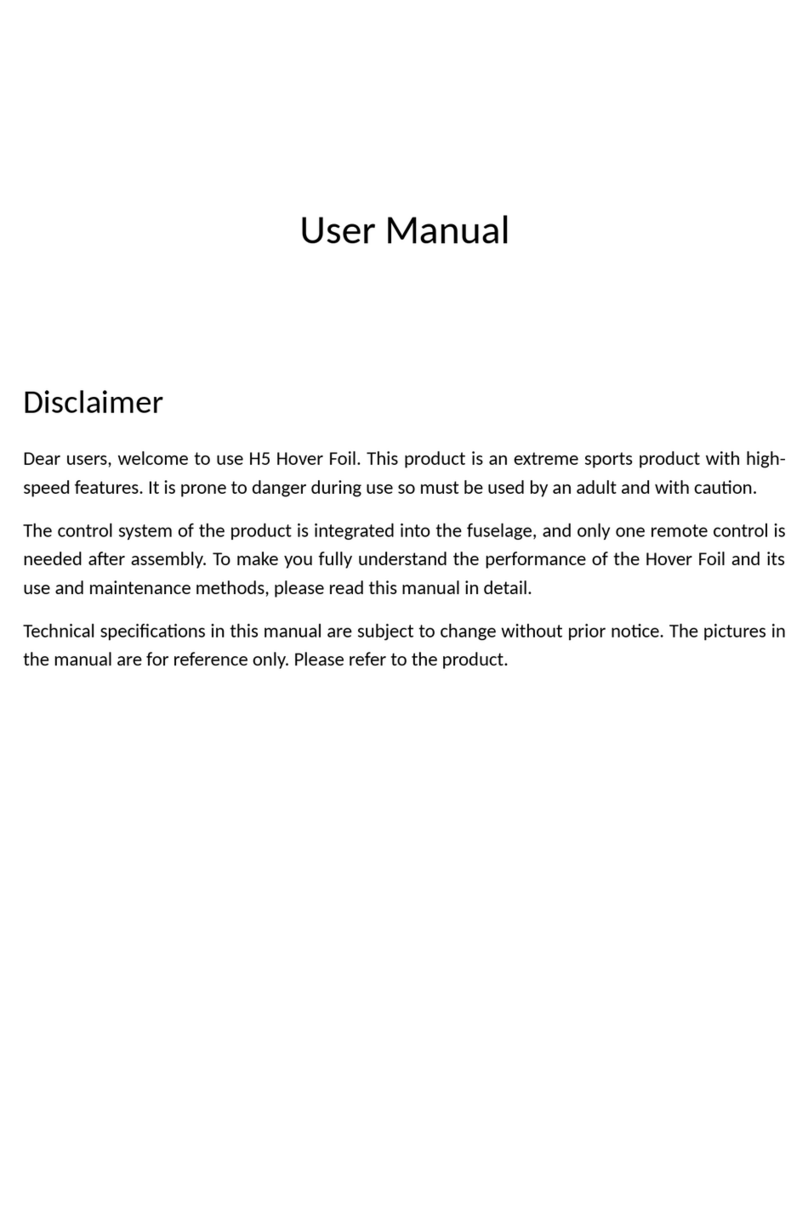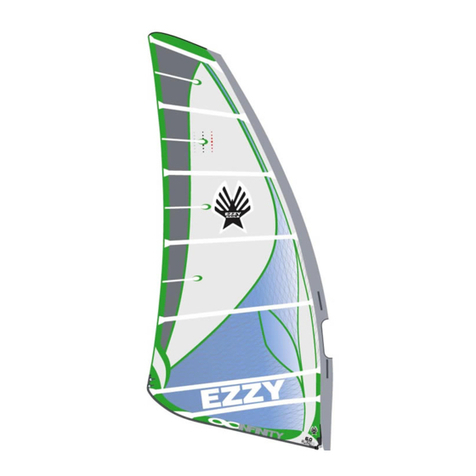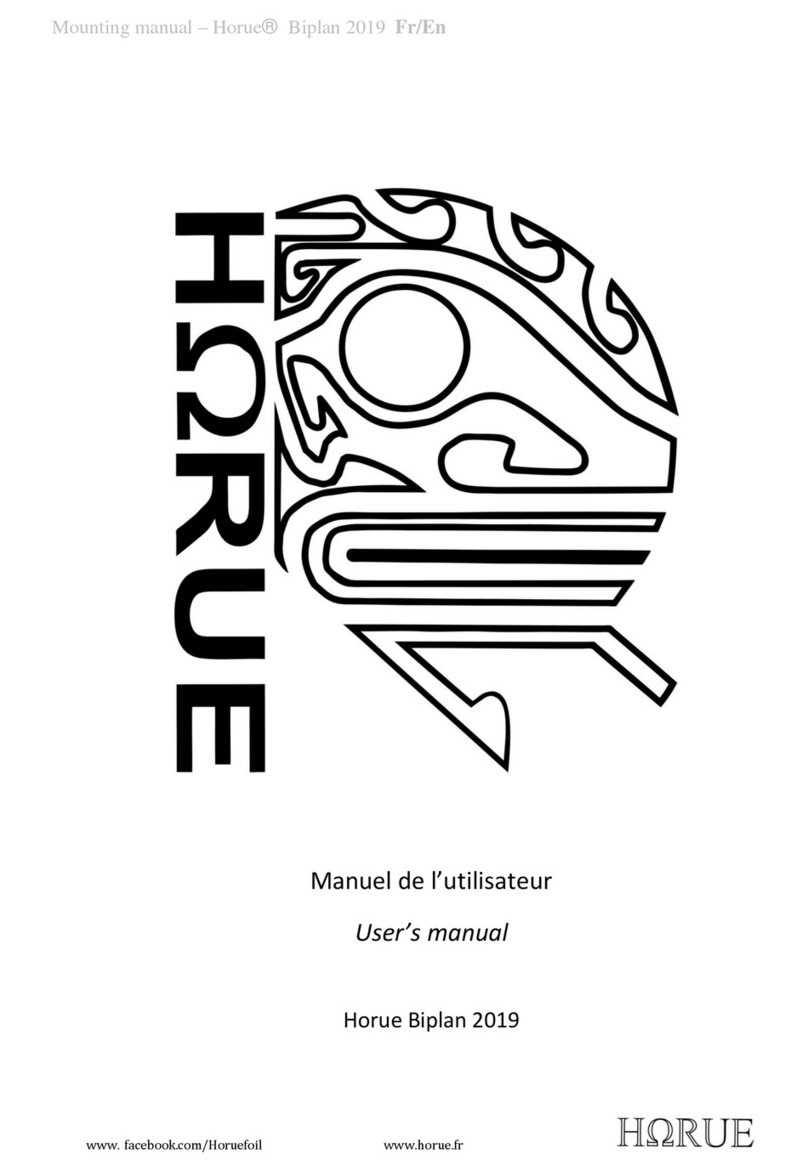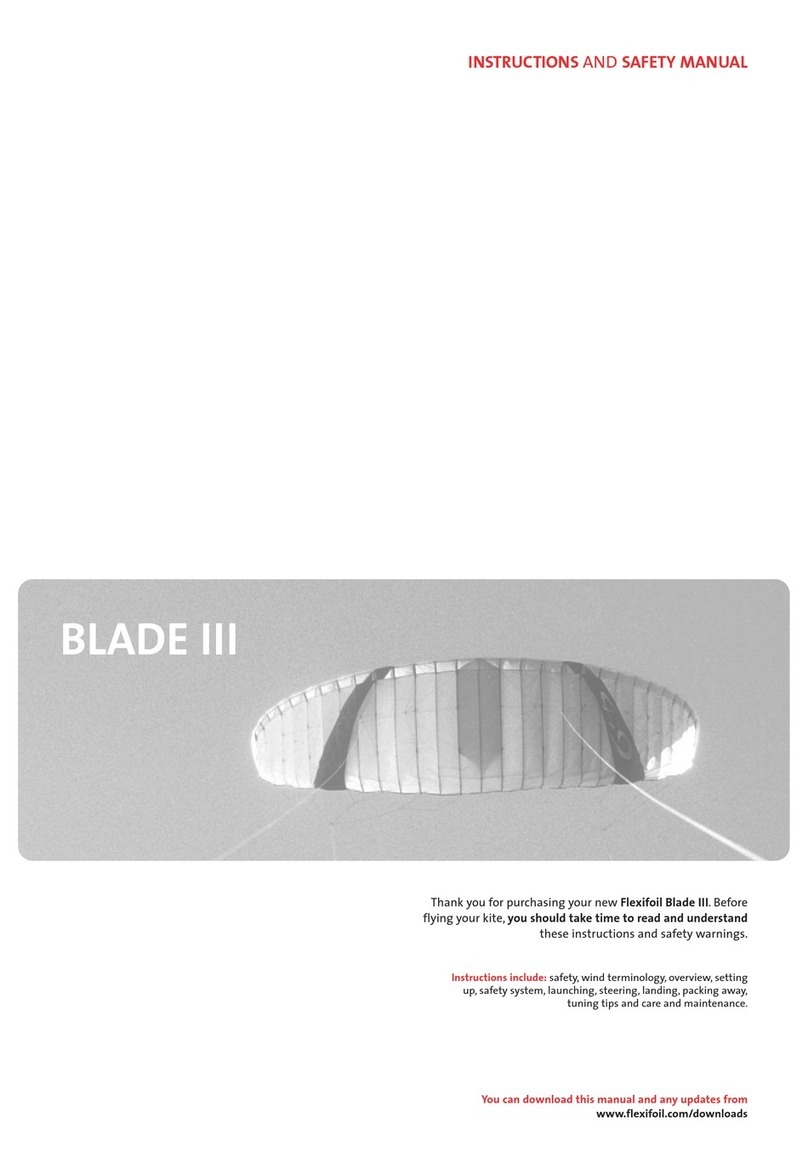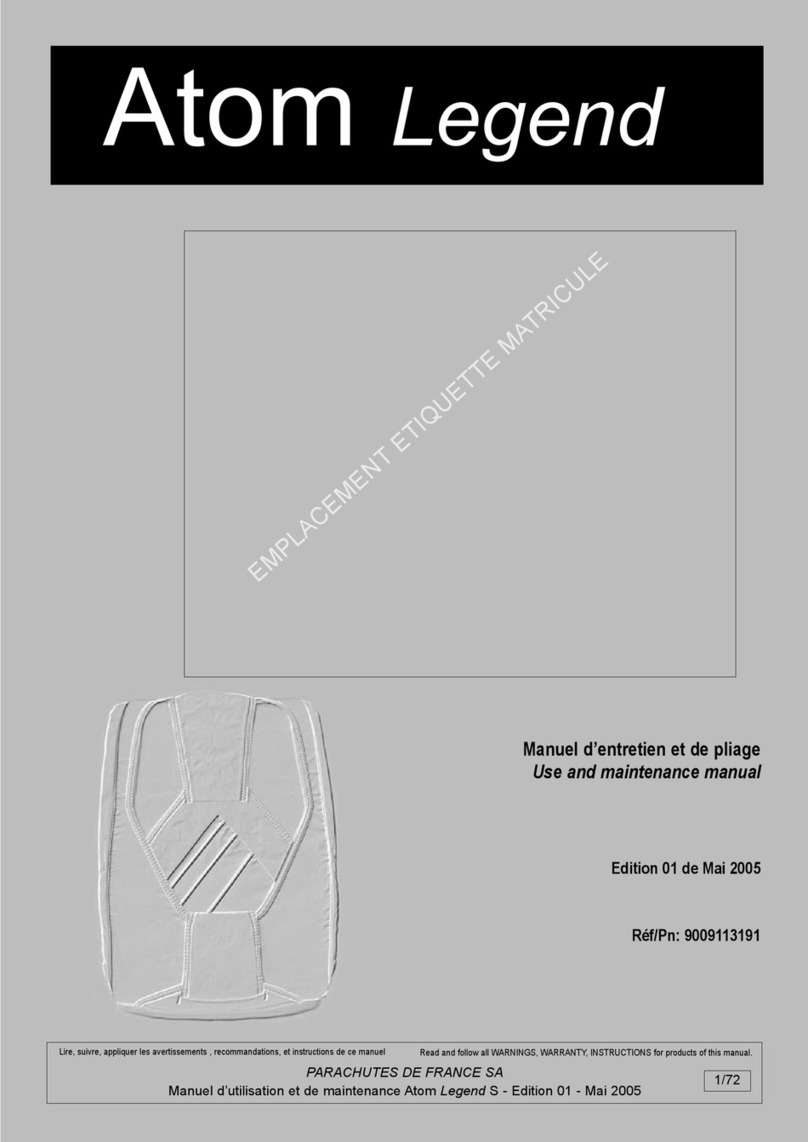Check that the batten tension on the screw-batten tensioners is correct. When correctly tensioned, there should
be no wrinkles running across the batten pockets. If the battens need adjusting, use the screwdriver key that is
stored at the tack of your sail and tighten the battens until the wrinkles through the batten pocket disappear.
WARNING: OVER-TENSIONING THE BATTENS COULD DAMAGE THE SAIL.
To set the outhaul: first, make sure the sail is correctly downhauled to the printed indicator between bat-
tens #2 and #3, then release ALL outhaul tension while making sure the battens and cams are all flipped
the same way. This is your starting point at zero outhaul. Now, adjust the boom to the end of the guide
tape. Next, outhaul to the end of the boom. This will be an average outhaul setting. For light wind, use
as little as 2.0 cm. (3/4”) of negative outhaul and for strong wind, up to 2.0 cm. of positive outhaul.
Check that the camber is not over-rotated. Over-rota-
tion will fatigue the cam and the batten and lead to
possible breakage. If the cam is over-rotated, you
need more downhaul.
Wrap the tack-strap webbing around the bottom of the mast base. The tack-strap should be tensioned at least until the edge of
the foot is tight. High tack-strap tension is desirable in all wind conditions. The tack-strap can not be over-tensioned: more tension
in stronger wind puts the center-of-effort lower, giving the sail more control; in light wind, tensioning the tack-strap makes the foot
deeper and tightens the lower leech creating better low-end power.
Secure the mast pad by wrapping the velcro around the mast then over the mast pad.
(Following this de-rigging sequence will prolong the life of your sail and avoid possible sail damage.)
1) Release the camber batten tension (push the release lever located on the center of the buckle) and undo the tack-strap.
2) Undo the tack strap and unfasten the mastpad velcro.
3) Release the downhaul.
4) Snap the cams off of the mast.
5) Release the outhaul and remove the boom.
6) Slide the mast out of the luff sleeve without creasing the sail.
7) Roll the sail beginning from the head, and tuck in the mast pad horizontally.
8) Insert the sail into the sail bag with the sleeve-end first.
• Sunlight will break down all sailcloth in a relatively short time (300 hours of direct sunlight). Don't dry off your sails in the sun!
• Creasing damages sail cloth. When rigging and de-rigging, try not to crease your sail or let it flap in the wind.
• Sand will scratch the monofilm and can clog the batten tensioners. Try to roll your sail sand-free.
• Cleaning: Use a mild soap and water with a rag to clean your sail. Harsh solvents may damage the sail cloth. Contrary to what
most people think, you do not need to fresh-water rinse your sail.
• Storage: It will not damage your sail to store it with the battens fully tensioned. If storing your rolled sail vertically, make sure
the sleeve-end is supporting the weight. This prevents the clew from getting damaged.
My Camber is difficult to get onto the mast.
1) Make sure the batten tensioner is completely released while snapping cam on.
2) Make sure the sail has no downhaul tension and is outhauled fully before snapping cam on.
My Camber does not flip:
1) Camber batten is too tight, release a little batten tension.
2) Cam is under-rotated, need less downhaul.
My Camber keeps popping off the mast:
1) Camber is over-bending, need more downhaul.
2) Mast diameter is larger than normal, lengthen the webbing straps on the cam.
My Sail feels heavy:
1) Leech is too tight, need more downhaul.
My Sail feels too powerful:
1) Sail is too deep, try more downhaul and outhaul.
2) Mast is too stiff, check that you are using the correct mast.
My Sail lacks power
1) Sail is too flat, try less downhaul and less outhaul.
2) Mast is too soft, check that you are using the correct mast.
Cam is over-rotated, need more downhaul. Cam is not over-rotated, downhaul is correct.
Adjust the boom to the guide tape, then outhaul.
7.
8.
9.
10.
11.
DE-RIGGING
SAIL CARE
PROBLEMS
If you have further questions, comments or suggestions, please feel free to contact us:
Ezzy
Sails
•
P
.O.
Box
107,
Paia
•
HI
96779,
USA
•
Ph:
(808)
575-2566
•
Fx:(808)
575-9094
•
e-mail:
[email protected] •
W
eb
Site:
ht
tp://www.ezzy.com(or)
(or)
(or)
(or)
(or)
